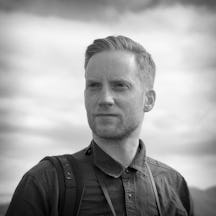As a doctor working with both inner-city and island communities, Gavin Francis has seen first-hand how coronavirus affects people from all walks of life. ‘Intensive Care’ is his deeply personal account of the pandemic and the impact it has had. In this extract he describes the practicalities and emotion of diagnosing a serious case of Covid-19.
A doctor, his community and coronavirus
Words by Gavin Francisphotography by Kieran Doddsaverage reading time 6 minutes
- Book extract

In my area of Lothian there are usually two cars providing emergency GP home visits over the weekends and in the evenings. A few days after Boris Johnson was admitted to hospital, I was out in ‘Car 2’, driving to the most urgent triage category of visit – which means getting there within an hour.
On the phone, the patient had said that after a week of flu-like symptoms, he was breathless, lying on his sofa, and had a fever – a characteristic story, and I knew that thousands of visits like this one were going on every day, up and down the country.
It was early evening: westering sunlight was turning the suburban streets golden; blackbirds were singing in privet hedges. I phoned the patient from the car for directions. His breath came in gasps, his sentences interrupted.
“Are you alone?” I asked.
“Yes.”
“Can you sit near the door?”
“Yes.”
“Just to warn you, I’ll be wearing an apron, mask, visor, gloves. I’ll give you a mask and gloves to wear, too.”
“OK.”
“If you sit near the door, it’s easier for me – I won’t have to come all through the house to find you.”
“OK.”
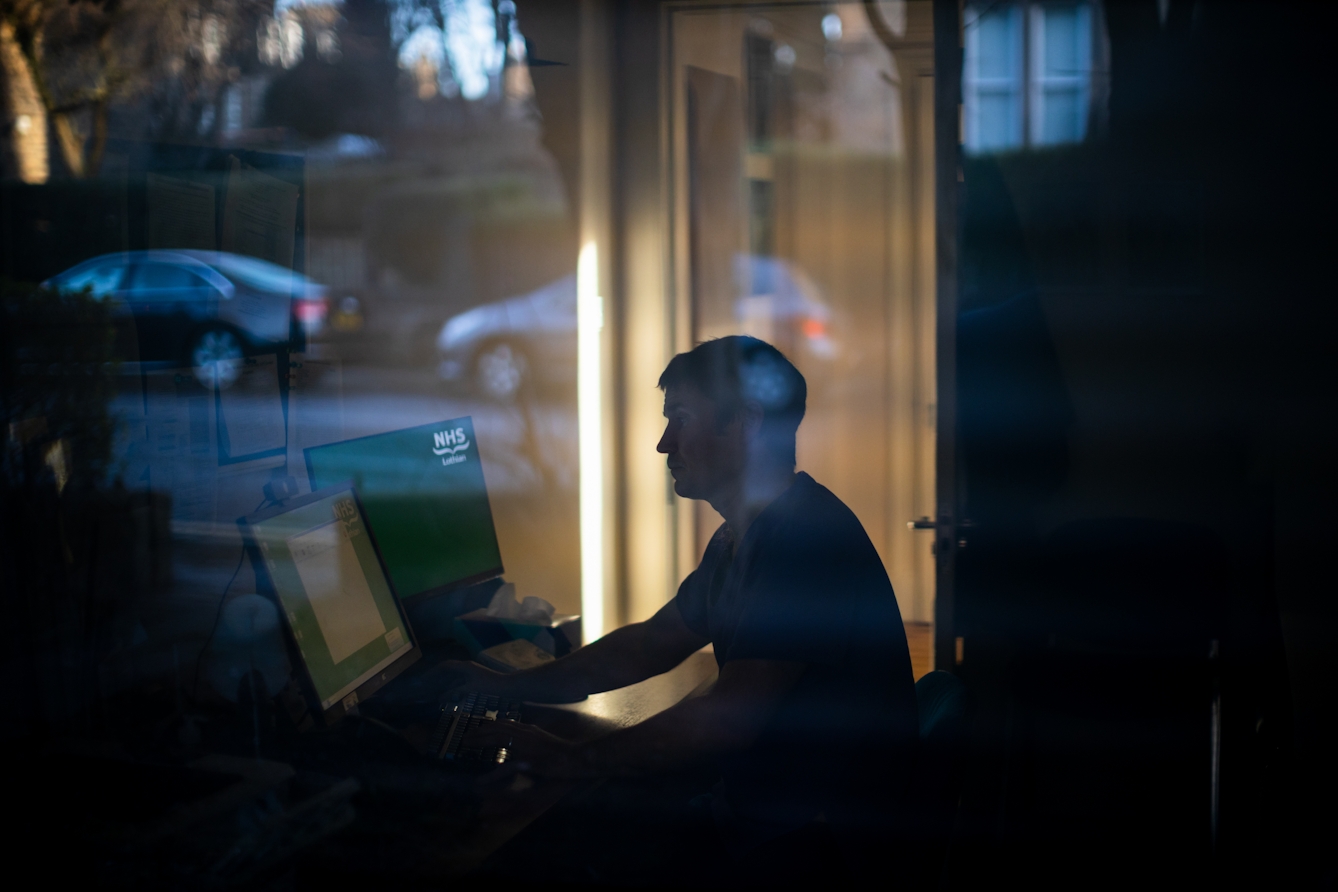
“On the phone, the patient had said that after a week of flu-like symptoms, he was breathless, lying on his sofa, and had a fever – a characteristic story.”
The doleful dance of diagnosis
I ignored the twitching curtains of the neighbours, the kids out on their bikes. Earlier in the shift, leaving another home visit, a patient had asked me, “Can you shout to the neighbours that I don’t have Covid?” Now I stood at the back of the car, opened the boot, and began the Great Faff, another new protocol to get accustomed to.
Thermometer, oxygen sensor, stethoscope, all placed into a clean, clear plastic bag. Apron on, mask on, gloves on, then a second pair of gloves over the first. The apron flapped about in the wind. Some of my colleagues have been Sellotaping the thin flapping plastic to their legs or using bulldog clips. Visor on last – its frame was 3D-printed in green plastic, with clips for attaching a head strap to the back, and a clear acetate shield to the front. On the inside of the forehead band was written ‘Car 2’ in Magic Marker.
At the patient’s front door, which was ajar, I breathed in the smell of stale cigarette smoke. The man was sitting on a stool just inside the door, elbows on his knees, bracing his chest with his arms to better move air in and out of his lungs. He was wearing grey pyjamas that had lost a couple of buttons.
“How are you doing?”
He grunted an acknowledgement.
“Can you manage to put on one of these?”
I handed him the mask, but he couldn’t tie the strings of it. Wishing my forearms weren’t bare, I leaned over him, holding my breath, and knotted the ties at the back of his head and neck.
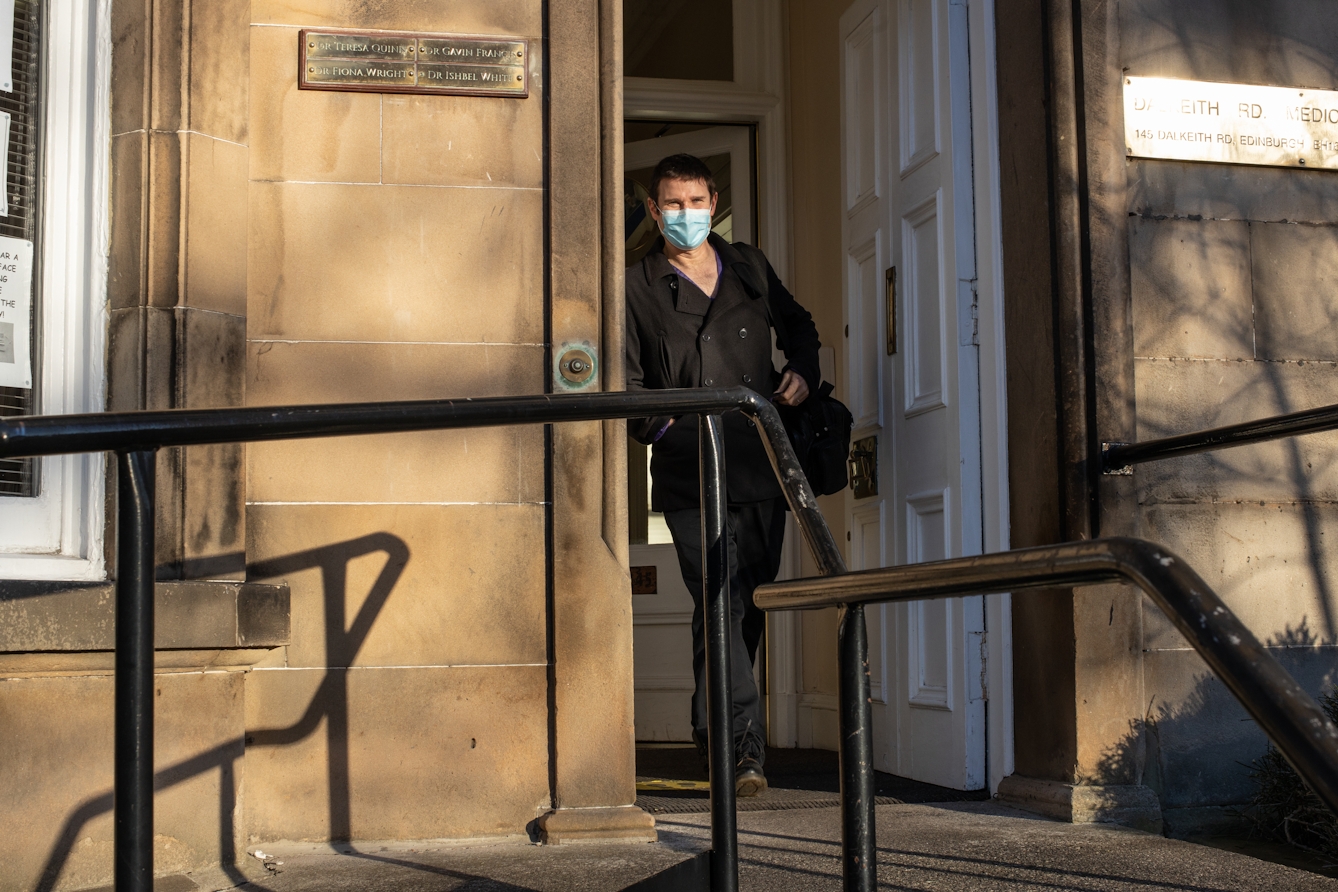
“Thermometer, oxygen sensor, stethoscope, all placed into a clean, clear plastic bag. Apron on, mask on, gloves on, then a second pair of gloves over the first.”
I counted his breathing – fast, at 28 breaths per minute – and a digital thermometer in his ear flashed red with an impressive fever. I put an oxygen sensor over his finger – by shining light through the skin it gauged the oxygen content of his blood, which was worryingly low. His pulse, as he sat on the stool, was galloping along at more than two beats a second.
“Can you stand up for me?” I asked.
We shuffled awkwardly in the small hall in a doleful dance; he turned around and I lifted his pyjamas to place my stethoscope on his back. The sound of the air passing through his lungs was accompanied by a quiet hissing sound, like sizzling fat. The sound of pneumonia. In his case, pneumonia probably caused by Covid-19.
“I’m going outside, then I’ll phone you about what happens next,” I told him. I picked up the clear bag with my stethoscope, oxygen sensor and thermometer, and stepped out, trying to hold central to my awareness and every action that there was virus on the walls of the house, on the door handle, on my gloves, and on all my equipment.
Fear and fellowship
On the doorstep I gulped down the fresh air, then it was back to the rigmarole: topmost layer of gloves off and into a waste bag. With my underlayer of gloves I took a chloride wipe and began to clean all the equipment – stethoscope, oxygen sensor, thermometer – and placed them into yet another clear plastic bag, ready for the next patient. The wipe went into the waste, then my apron.
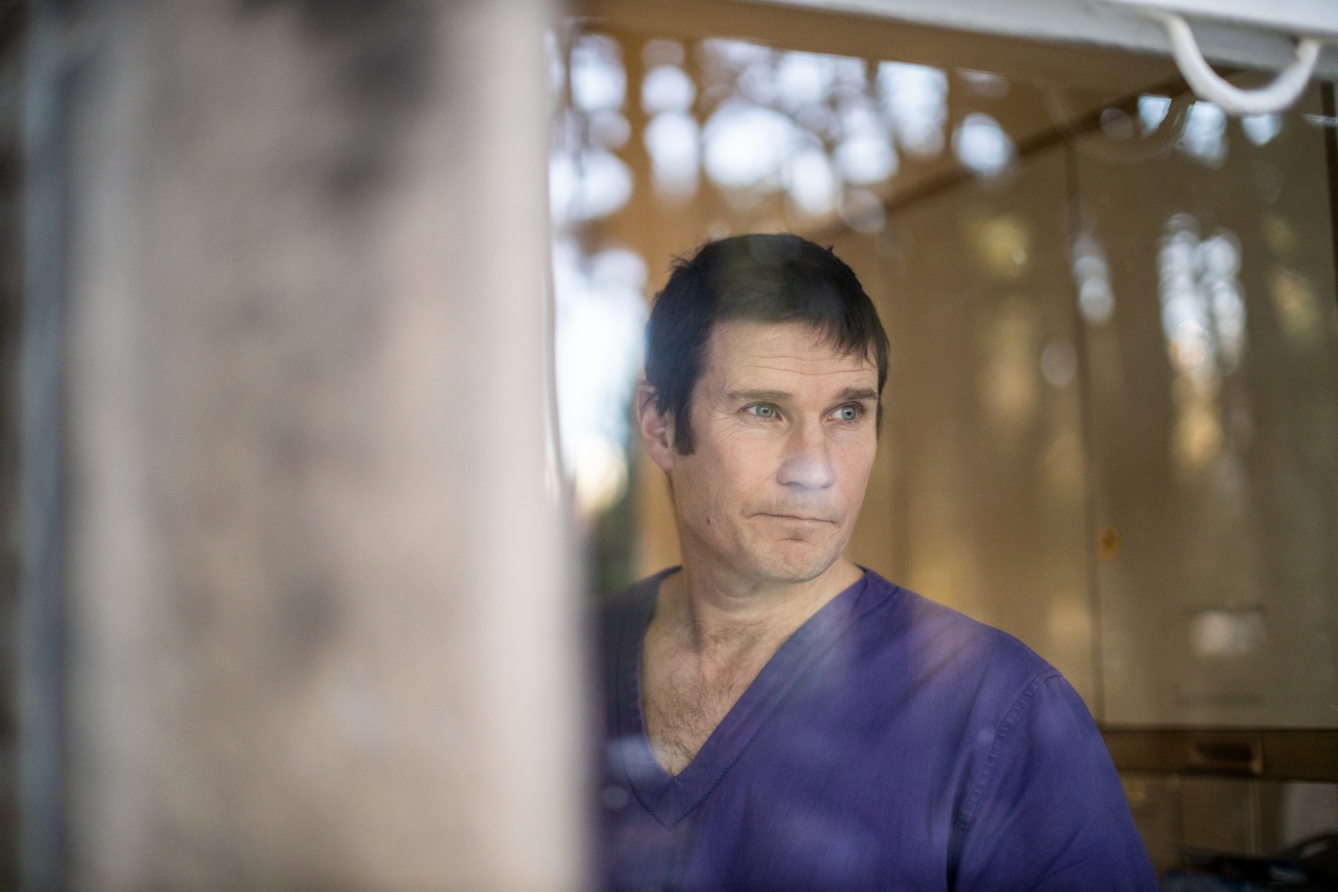
“The sound of the air passing through his lungs was accompanied by a quiet hissing sound, like sizzling fat. The sound of pneumonia. In his case, pneumonia probably caused by Covid-19.”
Next it was the visor’s turn to get cleaned, and afterwards I placed it on the ground to dry. Then undergloves off, mask off, the clinical waste bag tied off and sealed, and it was back into the car.
With all this donning and doffing of PPE, and cleaning of all the equipment, home visits now took far longer than they used to. I’d have been much happier wearing a gown in addition to the gloves, mask and visor – it would have better protected my arms, trunk and legs from droplets of virus. But, for now, there were no gowns available.
A few days earlier I had looked through the supplies of gloves and masks that had been delivered to my practice from central government stores: the masks were stamped with the name of a Canadian company, manufactured in China, and distributed by yet another company from Germany. My gloves had all been manufactured in Malaysia or Vietnam. If we were to get this equipment to the people who needed it in the UK, we needed manufacturers here – and production should have started in January.
From the car I dialled the man’s number again; all those years learning about personal consultation styles, and now I was breaking bad news by telephone from a car parked outside my patient’s house. As I waited for him to pick up, I glanced at the car mirror; my forehead was stamped with ‘Car 2’ in reverse, transferred in sweat from the visor headband.
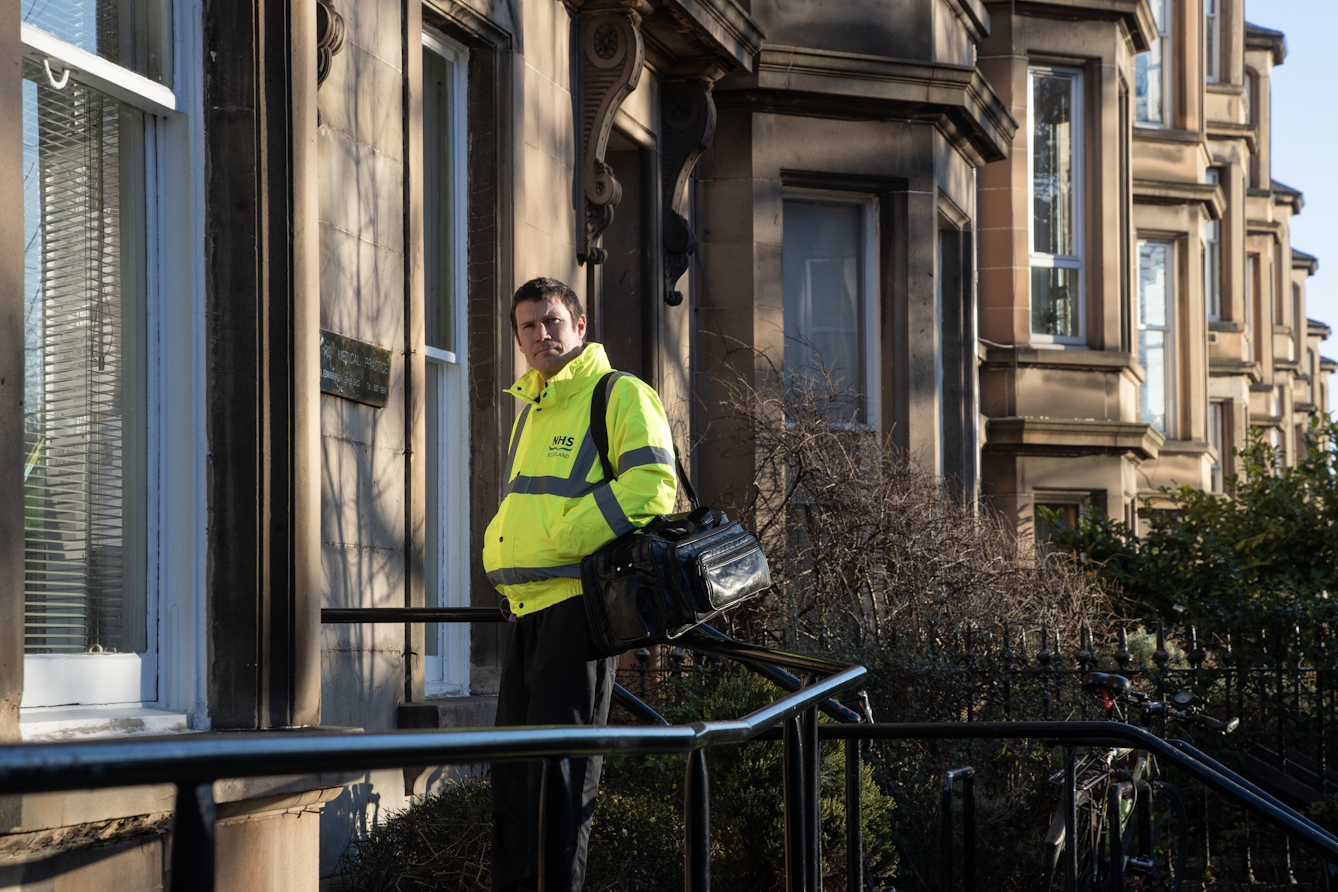
"All those years learning about personal consultation styles, and now I was breaking bad news by telephone from a car parked outside my patient’s house.”
“I think it’s likely that you have coronavirus,” I heard myself say, “and that it’s affecting your lungs, causing pneumonia. That’s why you feel so breathless.”
Silence.
“I’ll arrange for an ambulance to come and take you to hospital.”
I waited. His breathing was audible.
“Is there anything you’d like to ask?”
“How long for?” he said.
“I don’t know.”
Heading on to the next patient, I passed the ambulance I’d just called, on its way to collect him. The paramedics both waved and I waved back – one, who wasn’t yet wearing his mask, smiled. One of the few consolations of this pandemic is its grim camaraderie, a new fellowship among the fear.
‘Intensive Care’ is out now. Watch a recording of an event with Gavin Francis that explores what it means to be a doctor caring for a society in crisis during a pandemic.
About the contributors
Gavin Francis
Gavin Francis has worked across four continents as a surgeon, emergency physician, medical officer with the British Antarctic Survey and latterly as a GP; he has described the pandemic response of 2020 as the most intense period of his 20-year career in medicine. He’s the author of the Sunday Times bestseller ‘Adventures in Human Being’, which was a BMA Book of the Year, and ‘Shapeshifters’. His books have won the SMIT Scottish Book of the Year Award, the Saltire Award for Non-Fiction and been shortlisted for the Ondaatje and Costa Prizes. He also writes for the Guardian, The Times, the London Review of Books and Granta. He lives in Edinburgh with his wife and children.
Kieran Dodds
Kieran is a non-fiction photographer known for his research-driven photo stories and portraiture. His recent series ‘Hierotopia’ brought to light the church forests of Ethiopia and the vital role of religious communities to reverse the environmental crisis, and has been exhibited in LA, New York and London. His first book, ‘Gingers’, was released in November 2020, using portraits to connect distant cultures through the rarest of hair colours. He lives in Scotland with his wife and twin daughters.

